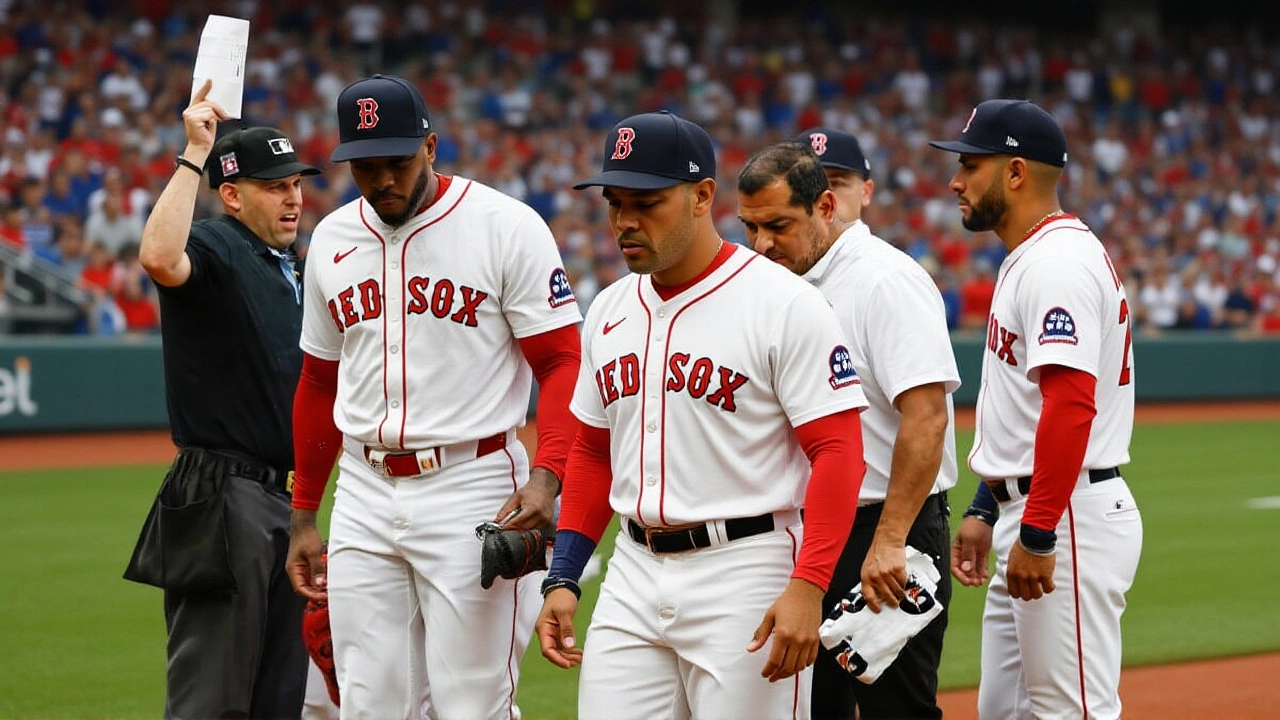
Red Sox Closer Aroldis Chapman Day-to-Day After Back Tightness vs Dodgers
Red Sox closer Aroldis Chapman left Sunday’s game with back tightness, slated as day‑to‑day. He expects a quick return as Boston fights for a playoff spot.
Caden LockhartWhen you hear the name Aroldis Chapman, you probably picture a blur of motion, a baseball screaming past the plate at over 100 mph. In other words, you’re thinking of a pitcher who lives for sheer velocity. Aroldis Chapman is a Dominican‑born right‑hander who has spent most of his career in the MLB, the top professional baseball league in North America. He’s best known for his fastball, a pitch that regularly tops 105 mph and holds the record for the fastest throw ever recorded in a major‑league game. Born in the Dominican Republic, Chapman honed his arm on sandlots before signing with the Cincinnati Reds as an international free agent. From that point onward, his career has been a study in how raw power can reshape a bullpen’s strategy, how a single pitch can change the outcome of a game, and how fans react to a player who can literally light up the scoreboard.
Chapman’s résumé reads like a checklist of elite reliever milestones. He boasts a career strikeout record that places him among the all‑time leaders, thanks to a combination of velocity, spin rate, and pinpoint control when it matters most. His role as a high‑leverage reliever—often deployed in the eighth or ninth inning—means he’s trusted to shut down close games, a task he’s performed for multiple playoff teams. The physics behind his fastball involve a rapid arm snap and a release point that maximizes both speed and movement, allowing batters just seconds to decide whether to swing. This rare skill set has earned him multiple All‑Star selections, a World Series ring with the Houston Astros, and a reputation as the go‑to guy when a manager needs a game‑changing out‑pitch. Injuries have occasionally slowed him down, but his work ethic and revamped conditioning routine have helped him bounce back, demonstrating how a modern pitcher can adapt and extend a high‑velocity career.
What makes Chapman’s story relevant beyond baseball is the way his performances intersect with broader fan culture. Gamers, for instance, love the adrenaline rush of a 100‑mph pitch just as they enjoy a perfect clutch move in a first‑person shooter; both moments spark the same “cheering” reaction in a community that thrives on excitement. In esports forums, you’ll hear users compare Chapman’s fastball to a sniper headshot—both are about precision, timing, and overwhelming power. This crossover appeal shows why a tag page about Chapman can attract readers interested in sports analytics, performance training, and even gaming psychology. Below, you’ll find a collection of posts that drill down into his record‑setting throws, break down his impact on bullpen usage, and explore the science behind that blistering fastball. Dive in to see how Chapman’s legacy continues to shape the way we think about speed, skill, and sheer will on the mound.

Red Sox closer Aroldis Chapman left Sunday’s game with back tightness, slated as day‑to‑day. He expects a quick return as Boston fights for a playoff spot.
Caden Lockhart